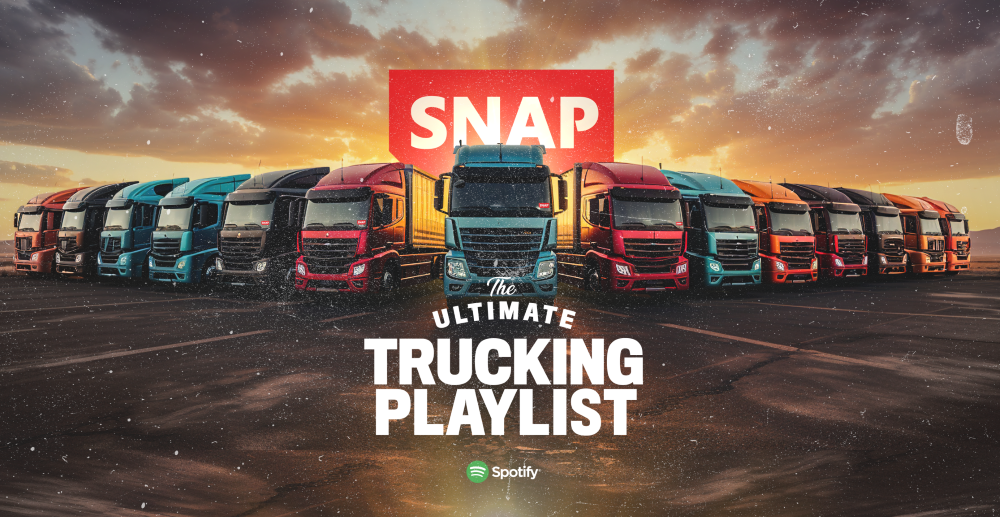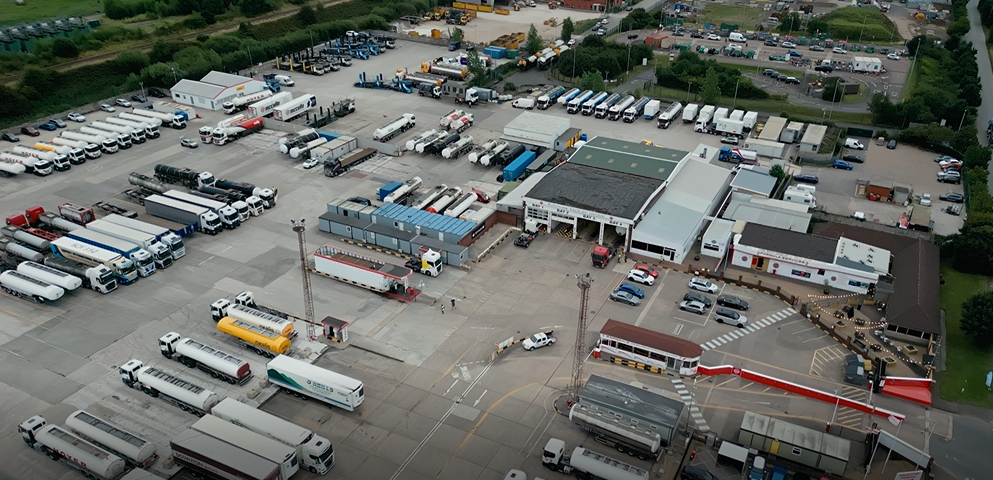
Susie Jones
Muzikos galia sunkvežimių pramonėje
Sukurta: 28-08-2024
•
Atnaujinta: 28-08-2024
Sunkvežimių vairuotojams, be perstojo keliaujantiems per Jungtinę Karalystę ir Europą, muzika yra ne tik foninis triukšmas - tai palydovė, kuri palengvina nuobodulį ir padeda išlaikyti budrumą, įsitraukimą ir susitelkimą į būsimą kelionę. Muzika gali pagerinti vairuotojo savijautą ir padidinti saugumą kelyje.
Kodėl muzika svarbi sunkvežimių vairuotojams
Daug valandų praleidžiant kelyje ir toli nuo draugų bei šeimos, sunkvežimio vairuotojo gyvenimas kartais gali būti vienišas. Muzika gali pakeisti kelionę, pakeldama nuotaiką ir neleisdama vairuotojui susikaupti kelyje. Be to, ji gali suteikti ramybės ir tylos vairuotojo prastovos metu.
Muzika ir vairuotojų sauga
Muzika ne tik padeda išvengti nuobodulio kelyje, bet ir gali turėti įtakos eismo saugumui. Atliktas tyrimas parodė, kad garsiai skambanti muzika (daugiau nei 95 decibelai) gali net 20 % sutrumpinti reakcijos laiką. Tyrimas taip pat parodė, kad 55 decibelų muzika pagerino vairavimo rezultatus - tie patys vairuotojai važiavo geriau nei tie, kurie vairavo be muzikos.
Muzika taip pat gali pakeisti jūsų nuotaiką stresinėse situacijose - švelnus rokas ir džiazas gali pagerinti vairuotojo dėmesį ir koncentraciją. Tie, kurie mėgsta greitesnio tempo muziką, saugokitės. Bandymais įrodyta, kad muzika su didesniu mušamųjų dažniu per minutę dažniau verčia vairuoti greitai ir neįvertinti savo greičio. Kai kuriais atvejais greitesnė muzika lėmė lenkimą, raudono šviesoforo signalo nepaisymą ir didesnį susidūrimų skaičių.
Autotrader atlikto tyrimo metu paaiškėjo, kad geriausios sunkvežimių vairavimo dainos yra popmuzikos atlikėjų, nes jos gerina koncentraciją - atliekant tyrimą buvo vertinami keli pavojaus suvokimo testai klausantis 20 skirtingų atlikėjų grojaraščių. Geriausiai pasirodė Drake'as, surinkęs 59,5/75 balo, o Ariana Grande ir Eminemas užėmė antrąsias vietas, surinkę 58,5/75 balo.
Poveikis fizinei ir psichinei sveikatai
JED fondas nustatė, kad muzika yra naudinga psichikos sveikatai dėl įvairių priežasčių:
Muzika gali atitraukti mintis nuo rūpimų dalykų ir padėti pabėgti.
Tam tikros muzikos rūšys gali sumažinti kortizolio kiekį ir taip sumažinti stresą. Klausantis jums patinkančios muzikos taip pat išsiskiria endorfinai, kurie suteikia gerą savijautą.
Aktyvina smegenis - [AARP] (https://www.health.harvard.edu/blog/why-is-music-good-for-the-brain-2020100721062) atliktas tyrimas parodė, kad tų, kurie reguliariai klausėsi muzikos, nerimo ir depresijos lygis sumažėjo. Be to, 69 proc. dažnai lankančių muzikos pasirodymus savo smegenų sveikatą įvertino puikiai arba labai gerai.
Nuotaikos gerinimas - mėgstama daina gali akimirksniu pakelti nuotaiką.
Muzika turi įtakos ne tik psichinei, bet ir fizinei vairuotojo sveikatai. Kelių Brazilijos, Jungtinės Karalystės ir Italijos universitetų atliktas tyrimas parodė, kad muzikos klausymasis turi įtakos širdies ir kraujagyslių stresui. Tyrimo metu nustatyta, kad klausantis muzikos vairuojant sumažėja širdies stresas.
Galutinis sunkvežimių grojaraštis
The Ultimate Trucking Playlist buvo sukurtas vairuotojams, vairuotojams. Kiekvieną savaitę prašome savo sunkvežimių vairuotojų bendruomenės balsuoti už tai, kokių dainų jie norėtų klausytis kelyje. Užtikrinkite, kad jūsų mėgstamiausia melodija patektų į sąrašą, eidami į mūsų Facebook puslapį.

Ar sunkvežimių vairuotojai žiūri televizorių?
Daugelis vairuotojų, valandų valandas praleidžiančių prie vairo, laisvalaikį leidžia žiūrėdami televizijos laidas ir filmus. Srautinio perdavimo paslaugos vairuotojams suteikė galimybę lengviau nei bet kada anksčiau susipažinti su naujausiais filmais. Be to, daugelyje sunkvežimių įrengtos palydovinio ryšio montavimo galimybės, todėl vairuotojai gali žiūrėti tiesioginę TV transliaciją patogiai įsitaisę kabinoje.
Ar sunkvežimių vairuotojai klausosi audioknygų?
Muzika atlieka svarbų vaidmenį sunkvežimio vairuotojo kelionėje, tačiau tai nėra vienintelis dalykas, kuris ilgų kelionių metu neleidžia nuobodžiauti. Apklaususi grupę sunkvežimių vairuotojų apie jų klausymosi pomėgius, Road Pro nustatė, kad audioknygos užima antrą vietą, o tradicinis radijas - trečią.
Daugelio nuomone, audioknygų naudojimas prie vairo blaško dėmesį. Nors muziką lengviau išjungti, tai nereiškia, kad audioknygos yra nesaugios. Tyrimai atskleidė, kad daugeliui vairuotojų audioknygos klausymasis nesutrikdė vairavimo - taip buvo tik "nuobodžiuose" kursuose. Vairuotojams, važiuojantiems klastingesnėmis vietovėmis, buvo sunku greitai reaguoti.



